EKG RECEIVER FOR POLAR BELT
Model: SA9330
- The EKG receiver detects the Heart Rate of a user from the Polar transmitter belt that the user wears around the chest.
- Polar transmitter belt is not provided by Thought Technology and must be purchased separately.
Product Overview
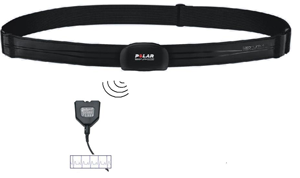 The EKG Receiver detects the heart rate of a user from the Polar transmitter belt T31, T31c and WearLink®+ (not provided) that the user wears around the chest. The Wireless reception range of the EKG receiver is deliberately kept short, typically 80cm (2.5 feet) to prevent it from connecting with other belts in the neighborhood of the user.
The EKG Receiver detects the heart rate of a user from the Polar transmitter belt T31, T31c and WearLink®+ (not provided) that the user wears around the chest. The Wireless reception range of the EKG receiver is deliberately kept short, typically 80cm (2.5 feet) to prevent it from connecting with other belts in the neighborhood of the user.
Benefits
- Wireless transmissions from the transmitter to the EKG receiver, thus no electrodes are needed.
- Heart beat signal is less prone to movement or EMG artifacts, and is very stable, so you have freedom of movement.
- Polar™ transmitter belts are slim and light, easy to position on the chest, and fully water resistant and designed for all weather conditions.
IMPORTANT NOTES:
PolarTM transmitter belt T31, T31c or WearLink®+ is not provided by Thought Technology and must be purchased separately. It can be easily purchased at your local major department stores, sports specialty stores, or other stores.
Coded or non-coded?
PolarTM has 2 variations of transmitter belts: coded and non-coded. PolarTM CODED Wireless Technology is to greatly reduce CROSSTALK issues when equipment is placed in close proximity to other equipment (typically in health clubs where equipment is placed < 1 ½ feet apart.), so that one person’s PolarTM watch won’t pick up the heart rate from the person next to you.
Our EKG Receiver can detect heart beats from both coded and non-coded PolarTM transmitter belts. However, EKG Receivers with serial numbers from E1024 to E1098 do not differentiate between them. These will still receive and process the signal, but will treat the coded belt as a NON-CODED one.
Compatible Polar™ Belts
Polar Products
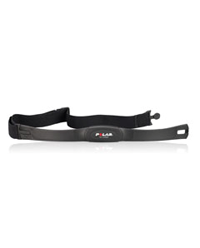 T31 coded™ transmitter
T31 coded™ transmitter
Source: Polar™ website
At the heart of your training is the coded T31. Its purpose is simple: to transmit your heart rate to your wrist unit. Slim and light, the ECG (electrocardiogram) accurate transmitter is fully water resistant and designed for all weather conditions
- Built to last with up to 2500 hours of training usage
- Prevents cross-talk from other electrical devices for accurate measurement of your training
Compatibility: fully compatible, except the EKG receivers with the serial numbers listed E1024 to E1098. Those receivers will treat T31c transmitter as a NON-CODED belt (like a T31 transmitter).
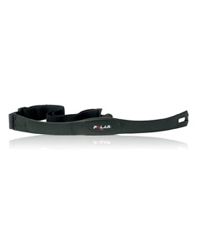 T31 transmitter
T31 transmitter
Source: Polar™ website
Slightly different to the T31c Transmitter, the slim, light and waterproof T31 doesn’t have the benefit of coding for interference free transmission. However, its purpose remains the same: to transmit your heart rate to your wrist unit ECG (electrocardiogram) accurately.
Compatibility: fully compatible
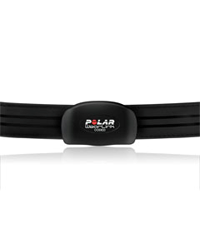 WearLink®+ transmitter
WearLink®+ transmitter
Source: Polar™ website
Comfort is key when training. That’s why Polar created the Polar WearLink®+ transmitter belt. It not only measures your heart rate but also seamlessly adapts to your body shapes so you feel as if it’s not even there. The transmitter consists of an electrode strap and a connector, and with its new side-clip mechanism, it’s just as quick to put on as it is to take off.
Compatibility: fully compatible
Technical Specifications
- Size : 25mm x 23mm x 11mm
- Weight : 15g (0.5 oz)
- Wireless Reception Range : 80cm (2.5 feet) typical, 105cm (3.5 feet) maximum
- Output Waveform : Digital pulses 15mS
- Operating temperature : 10°C - 40°C
- Current Consumption, maximum : 1.5mA
Interfacing with 3rd Party Data Acquisition Systems
Recommended Connectivity for Electrical Safety
Thought Technology recommends the use of TT Sensor Isolator ST9405AM when interfacing patient connected sensor(s) to line powered equipment(s) or devices.
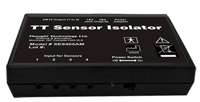 The TT Sensor Isolator ST9405AM is an interface device providing medical grade electrical isolation between the patient connected sensors and the acquisition system. It provides the equivalent of Two Means of Patient Protection under IEC 60601-1, and supplies battery power to the sensors. Using this device ensures Thought Technology sensors are safely interfaced to the analog inputs of line-powered systems such as computers with DAQ cards.
The TT Sensor Isolator ST9405AM is an interface device providing medical grade electrical isolation between the patient connected sensors and the acquisition system. It provides the equivalent of Two Means of Patient Protection under IEC 60601-1, and supplies battery power to the sensors. Using this device ensures Thought Technology sensors are safely interfaced to the analog inputs of line-powered systems such as computers with DAQ cards.
Note that this device isolates only between sensors and the DAQ interface, not between different sensor channels.
The TT Sensor Isolator can interface up to 4 sensors to a DAQ card. TT Sensor Isolator can be connected to the DAQ card in two ways:
- via two stereo jacks, or
- via a DB-15 connector; a BNC interface cable (SA9409BNC) or a pigtail cable (SA9409PGT) can be provided with the unit.

For more detailed information on the Sensor Isolator 4∞, consult the Thought Technology Science Division website or contact the sales department or your distributor.
Division website or contact the sales department or your distributor.
Direct Connectivity for Electrically Isolated Systems
The following notes are provided for qualified users to directly interface Thought Technology sensors with external systems.
WARNING: If the sensor is interfaced to non-Thought Technology devices without the use of a TT Sensor Isolator SE9405AM, an elevated risk of electrical shock may be present. In particular, if a patient-connected sensor is connected to any line powered device(s) or equipment(s), it will be the responsibility of the qualified user to ensure the electrical safety in the setup and to ensure that the device or equipment provides sufficient isolation.
To interface with a sensor, a single sensor cable may be cut in half. Both sides can then be used to make custom interfacing cables by stripping the outer insulation of each required conductor. The sensor cable contains 4 color coded conductors. The table below shows the color coding and pin connector assignment.
| Pin | Color Code | Function | Note |
| 1 | metal (shield) | ground | Signal and power ground, connection required. |
| 2 | yellow | auxiliary (sensor ID) | No connection required. |
| 3 | green | signal | Sensor output signal |
| 4 | red | sensor power | Supply voltage, +7.26V referenced to ground. Note: sensor performance may be sensitive to supply voltage. |

Notes:
1. The nominal supply voltage for this sensor is 7.26V. The sensor can safely be used with a supply voltage of up to 9V. However, as the sensor is calibrated with a 7.26V supply voltage level, changes in gain and offset may be expected when operating at a different supply voltage level, changes in gain and offset may be expected when operating at a different supply voltage.
2. The output of the EKG sensor is AC (capacitive) coupled. Therefore, in order to set the DC level of the signal when connected to a DAQ system, it is usually necessary to connect a DC bias resistor between the signal (pin 3, green wire) and ground(pin 1, shield wire). A typical value for this resistor is 2.2 Megohms.
If no resistor is connected, the DC signal level may be unstable, and may drift upward or downward and saturate the DAQ input. This condition will result in an unusable signal but will not typically cause any equipment damage.
Recommended Specifications for DAQ Hardware
- Recommended resolution of 0.15mV (16-bit ADC over 10V span) or better
- Minimum input range:
- If connected via SE9405AM Sensor Isolator, choose 0-5V (unipolar) or ±5V (bipolar).
- If directly connected to DAQ, choose ±5V (bipolar).
Product Overview
 The EKG Receiver detects the heart rate of a user from the Polar transmitter belt T31, T31c and WearLink®+ (not provided) that the user wears around the chest. The Wireless reception range of the EKG receiver is deliberately kept short, typically 80cm (2.5 feet) to prevent it from connecting with other belts in the neighborhood of the user.
The EKG Receiver detects the heart rate of a user from the Polar transmitter belt T31, T31c and WearLink®+ (not provided) that the user wears around the chest. The Wireless reception range of the EKG receiver is deliberately kept short, typically 80cm (2.5 feet) to prevent it from connecting with other belts in the neighborhood of the user.
Benefits
- Wireless transmissions from the transmitter to the EKG receiver, thus no electrodes are needed.
- Heart beat signal is less prone to movement or EMG artifacts, and is very stable, so you have freedom of movement.
- Polar™ transmitter belts are slim and light, easy to position on the chest, and fully water resistant and designed for all weather conditions.
IMPORTANT NOTES:
PolarTM transmitter belt T31, T31c or WearLink®+ is not provided by Thought Technology and must be purchased separately. It can be easily purchased at your local major department stores, sports specialty stores, or other stores.
Coded or non-coded?
PolarTM has 2 variations of transmitter belts: coded and non-coded. PolarTM CODED Wireless Technology is to greatly reduce CROSSTALK issues when equipment is placed in close proximity to other equipment (typically in health clubs where equipment is placed < 1 ½ feet apart.), so that one person’s PolarTM watch won’t pick up the heart rate from the person next to you.
Our EKG Receiver can detect heart beats from both coded and non-coded PolarTM transmitter belts. However, EKG Receivers with serial numbers from E1024 to E1098 do not differentiate between them. These will still receive and process the signal, but will treat the coded belt as a NON-CODED one.
Compatible Polar™ Belts
Polar Products
 T31 coded™ transmitter
T31 coded™ transmitter
Source: Polar™ website
At the heart of your training is the coded T31. Its purpose is simple: to transmit your heart rate to your wrist unit. Slim and light, the ECG (electrocardiogram) accurate transmitter is fully water resistant and designed for all weather conditions
- Built to last with up to 2500 hours of training usage
- Prevents cross-talk from other electrical devices for accurate measurement of your training
Compatibility: fully compatible, except the EKG receivers with the serial numbers listed E1024 to E1098. Those receivers will treat T31c transmitter as a NON-CODED belt (like a T31 transmitter).
 T31 transmitter
T31 transmitter
Source: Polar™ website
Slightly different to the T31c Transmitter, the slim, light and waterproof T31 doesn’t have the benefit of coding for interference free transmission. However, its purpose remains the same: to transmit your heart rate to your wrist unit ECG (electrocardiogram) accurately.
Compatibility: fully compatible
 WearLink®+ transmitter
WearLink®+ transmitter
Source: Polar™ website
Comfort is key when training. That’s why Polar created the Polar WearLink®+ transmitter belt. It not only measures your heart rate but also seamlessly adapts to your body shapes so you feel as if it’s not even there. The transmitter consists of an electrode strap and a connector, and with its new side-clip mechanism, it’s just as quick to put on as it is to take off.
Compatibility: fully compatible
Technical Specifications
- Size : 25mm x 23mm x 11mm
- Weight : 15g (0.5 oz)
- Wireless Reception Range : 80cm (2.5 feet) typical, 105cm (3.5 feet) maximum
- Output Waveform : Digital pulses 15mS
- Operating temperature : 10°C - 40°C
- Current Consumption, maximum : 1.5mA
Interfacing with 3rd Party Data Acquisition Systems
Recommended Connectivity for Electrical Safety
Thought Technology recommends the use of TT Sensor Isolator ST9405AM when interfacing patient connected sensor(s) to line powered equipment(s) or devices.
 The TT Sensor Isolator ST9405AM is an interface device providing medical grade electrical isolation between the patient connected sensors and the acquisition system. It provides the equivalent of Two Means of Patient Protection under IEC 60601-1, and supplies battery power to the sensors. Using this device ensures Thought Technology sensors are safely interfaced to the analog inputs of line-powered systems such as computers with DAQ cards.
The TT Sensor Isolator ST9405AM is an interface device providing medical grade electrical isolation between the patient connected sensors and the acquisition system. It provides the equivalent of Two Means of Patient Protection under IEC 60601-1, and supplies battery power to the sensors. Using this device ensures Thought Technology sensors are safely interfaced to the analog inputs of line-powered systems such as computers with DAQ cards.
Note that this device isolates only between sensors and the DAQ interface, not between different sensor channels.
The TT Sensor Isolator can interface up to 4 sensors to a DAQ card. TT Sensor Isolator can be connected to the DAQ card in two ways:
- via two stereo jacks, or
- via a DB-15 connector; a BNC interface cable (SA9409BNC) or a pigtail cable (SA9409PGT) can be provided with the unit.

For more detailed information on the Sensor Isolator 4∞, consult the Thought Technology Science Division website or contact the sales department or your distributor.
Division website or contact the sales department or your distributor.
Direct Connectivity for Electrically Isolated Systems
The following notes are provided for qualified users to directly interface Thought Technology sensors with external systems.
WARNING: If the sensor is interfaced to non-Thought Technology devices without the use of a TT Sensor Isolator SE9405AM, an elevated risk of electrical shock may be present. In particular, if a patient-connected sensor is connected to any line powered device(s) or equipment(s), it will be the responsibility of the qualified user to ensure the electrical safety in the setup and to ensure that the device or equipment provides sufficient isolation.
To interface with a sensor, a single sensor cable may be cut in half. Both sides can then be used to make custom interfacing cables by stripping the outer insulation of each required conductor. The sensor cable contains 4 color coded conductors. The table below shows the color coding and pin connector assignment.
| Pin | Color Code | Function | Note |
| 1 | metal (shield) | ground | Signal and power ground, connection required. |
| 2 | yellow | auxiliary (sensor ID) | No connection required. |
| 3 | green | signal | Sensor output signal |
| 4 | red | sensor power | Supply voltage, +7.26V referenced to ground. Note: sensor performance may be sensitive to supply voltage. |

Notes:
1. The nominal supply voltage for this sensor is 7.26V. The sensor can safely be used with a supply voltage of up to 9V. However, as the sensor is calibrated with a 7.26V supply voltage level, changes in gain and offset may be expected when operating at a different supply voltage level, changes in gain and offset may be expected when operating at a different supply voltage.
2. The output of the EKG sensor is AC (capacitive) coupled. Therefore, in order to set the DC level of the signal when connected to a DAQ system, it is usually necessary to connect a DC bias resistor between the signal (pin 3, green wire) and ground(pin 1, shield wire). A typical value for this resistor is 2.2 Megohms.
If no resistor is connected, the DC signal level may be unstable, and may drift upward or downward and saturate the DAQ input. This condition will result in an unusable signal but will not typically cause any equipment damage.
Recommended Specifications for DAQ Hardware
- Recommended resolution of 0.15mV (16-bit ADC over 10V span) or better
- Minimum input range:
- If connected via SE9405AM Sensor Isolator, choose 0-5V (unipolar) or ±5V (bipolar).
- If directly connected to DAQ, choose ±5V (bipolar).
Technical Specifications
| Size : 25mm x 23mm x 11mm |
| Weight : 15g (0.5 oz) |
| Wireless Reception Range :80cm (2.5 feet) typical, 105cm (3.5 feet) maximum |
| Output Waveform :Digital pulses 15mS |
| Operating temperature :10°C - 40°C |
| Current Consumption, maximum :1.5mA |
More Products to Consider
Table of Contents
Suggested References
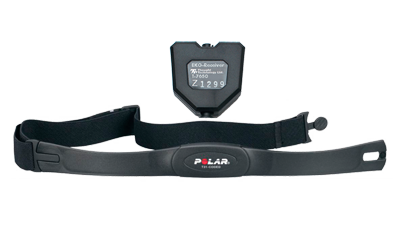
 TT Infra Sensor
TT Infra Sensor